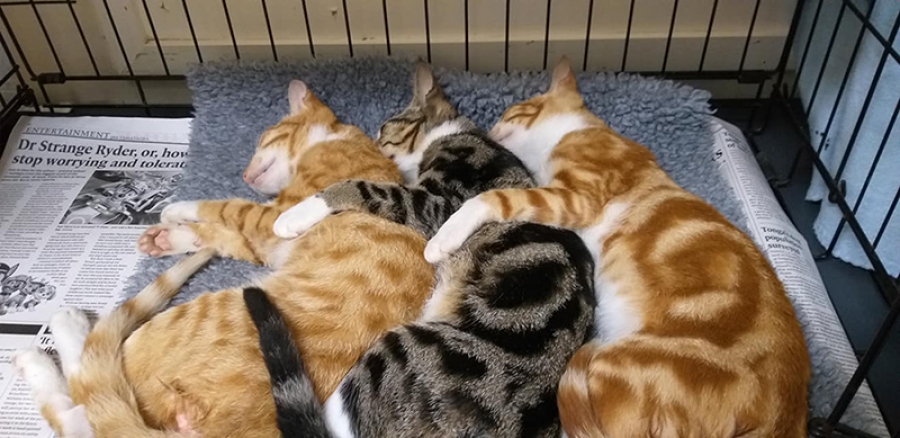Pet Talk: Food glorious food
Wednesday 7 June 2023 | Written by Supplied | Published in Opinion, Pet Talk

Cats having a nap at the Te Are Manu Vet Clinic. 20022109 / Te Are Manu. 20022109 / Te Are Manu.
Food is one of life’s greatest pleasures. Sitting down to dinner is the best. The best. Well at least the best since breakfast. We can eat food for pleasure, but the reason we need food is for energy, writes Te Are Manu clinic medical director Dr Michael Baer.
Energy is our first concern. For movement, like breathing. For digestion of our next meal. To find our next meal. Energy comes from various sources in our diet. Fat like oils in vegetables or the layer of fat around the muscle (meat) we eat is a good source.
Carbohydrates like sugar or starch are a significant source of energy for most of us. Protein, like muscle tissue, or seed and pulses are also good sources of energy. Because our cells all run on sugar (glucose), carbohydrates are the easiest for us to use as an energy source.
Fat, carbohydrates, and protein are the major components of every diet. And they do provide energy, but we need them for more than energy. We need them to provide the building blocks of our bodies. But we need a few more things too. We need minerals, calcium and phosphorous for bones, iron for blood, zinc for skin. We need vitamins to ensure our bodies grow properly and keep our cells healthy.
To get all of these things we eat a mixed diet of meat, vegetables, dairy, pretty much everything. Most people are omnivores, that is we eat meat, grains, vegetables, fruit. But not all animals are omnivores, some, like cats only eat meat, they are carnivores. Others, like cows and goats, eat vegetables (grass), they are herbivores.
Carnivores survive on very little carbohydrate, very little sugar. Most of their diet is protein and fat. Their bodies are very good at turning protein and fat into glucose so their cells can work. And they do get some carbohydrates from the gut content of the animals they eat.
Herbivores eat a lot of carbohydrate. They get protein and some fat too, more if we control their diet and add oil seeds or grains. But they have the problem of converting structural carbs, which allow grass to stand up, into glucose. No animal can actually do that, so herbivores provide a place for bacteria to live in their bodies. The bacteria then break the structural carbohydrates into smaller blocks, which the animal can digest. A bonus of this strategy is the bacteria can then be digested by the cow, and provide protein. Clever.
Knowing what animals need and the options we have to provide it is the key to having healthy animals. Many illnesses are made worse when we don’t feed our animals properly. And not feeding animals properly can cause diseases. For example, cats need an ingredient called taurine, which is not present in dog food. If cats don’t get taurine they can end up with heart failure. And too much of something can be a problem too. Cats used to be fed a lot of liver. Liver has a lot of vitamin A. An excess of vitamin A caused all of the joints in the cats to lock up, the cats became stuck in position.
Animals and people need a balanced diet, appropriate to their needs. Getting a balanced diet most of the time means the odd treat is ok. Thankfully!

















































